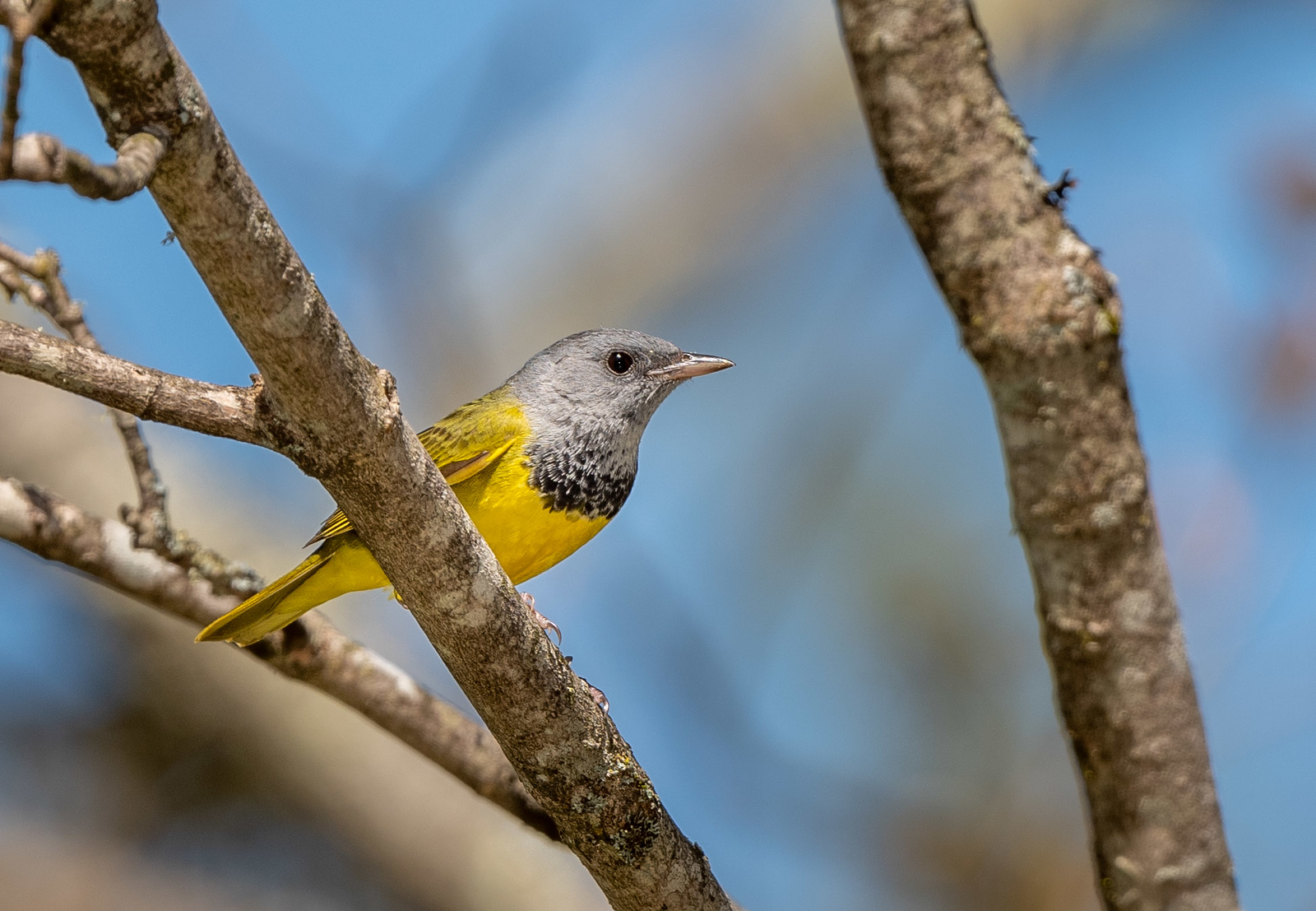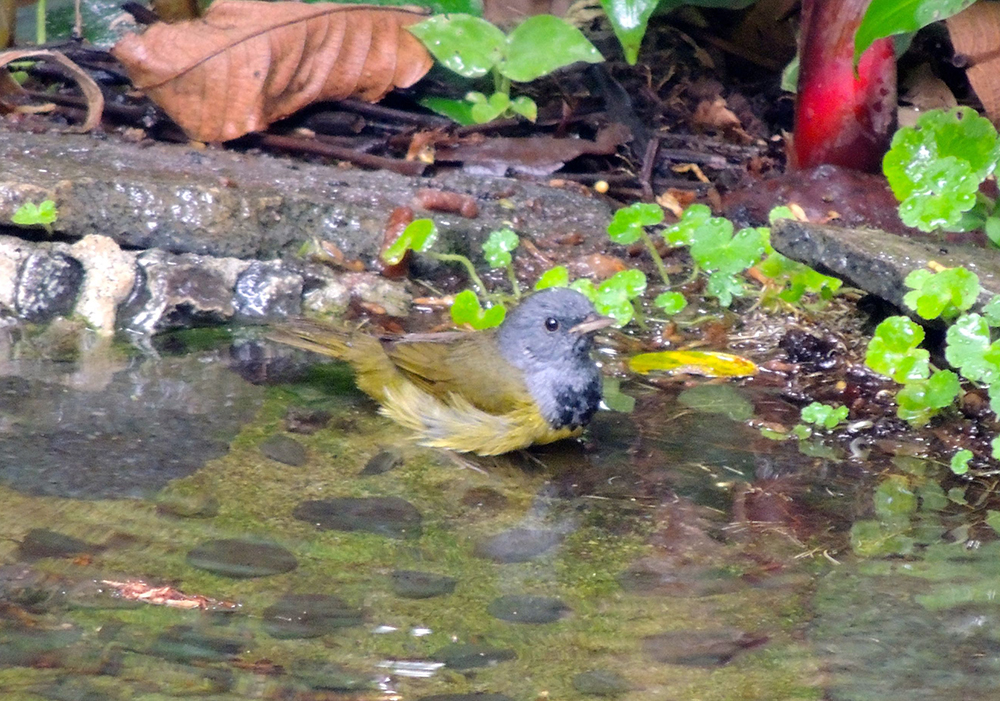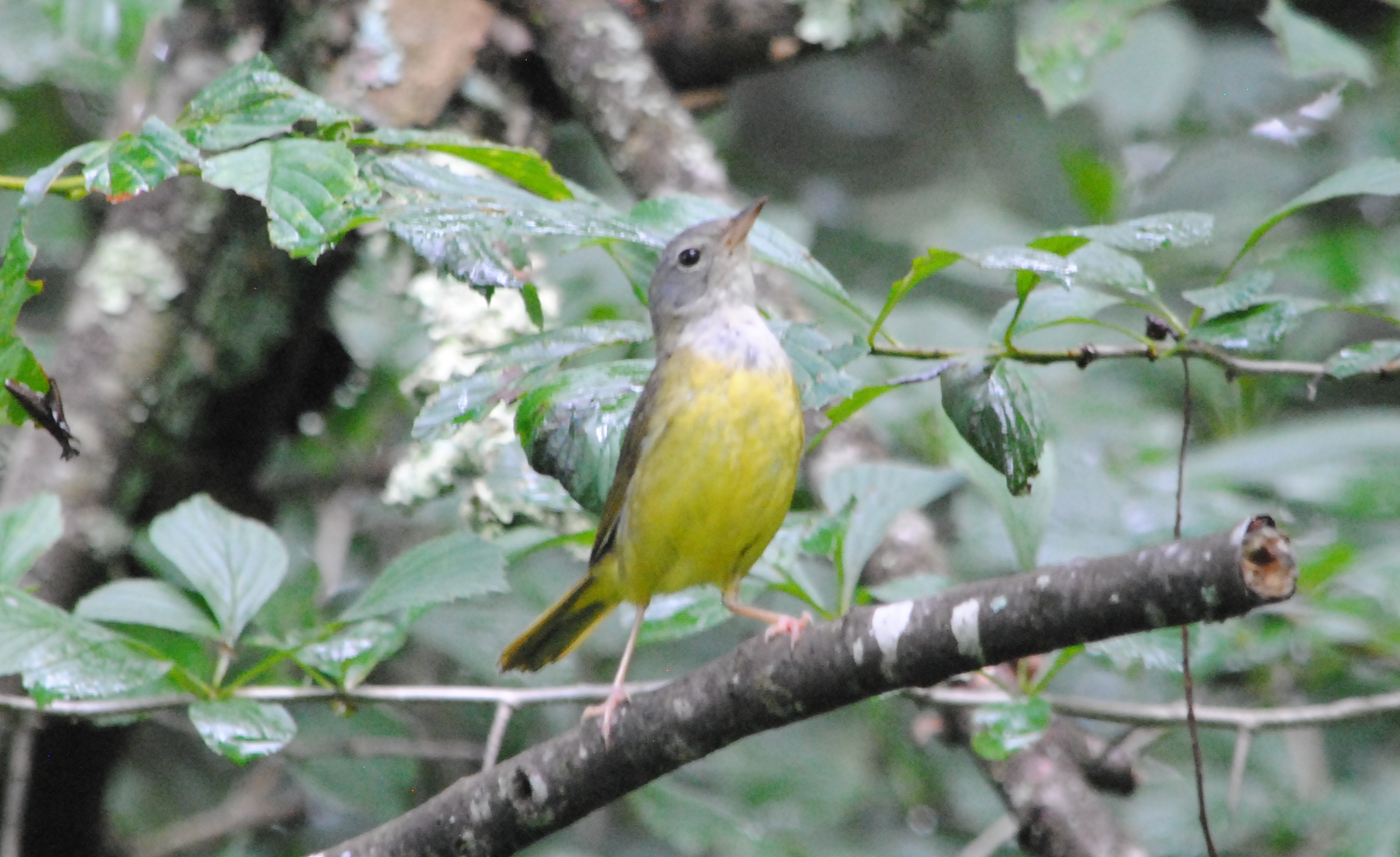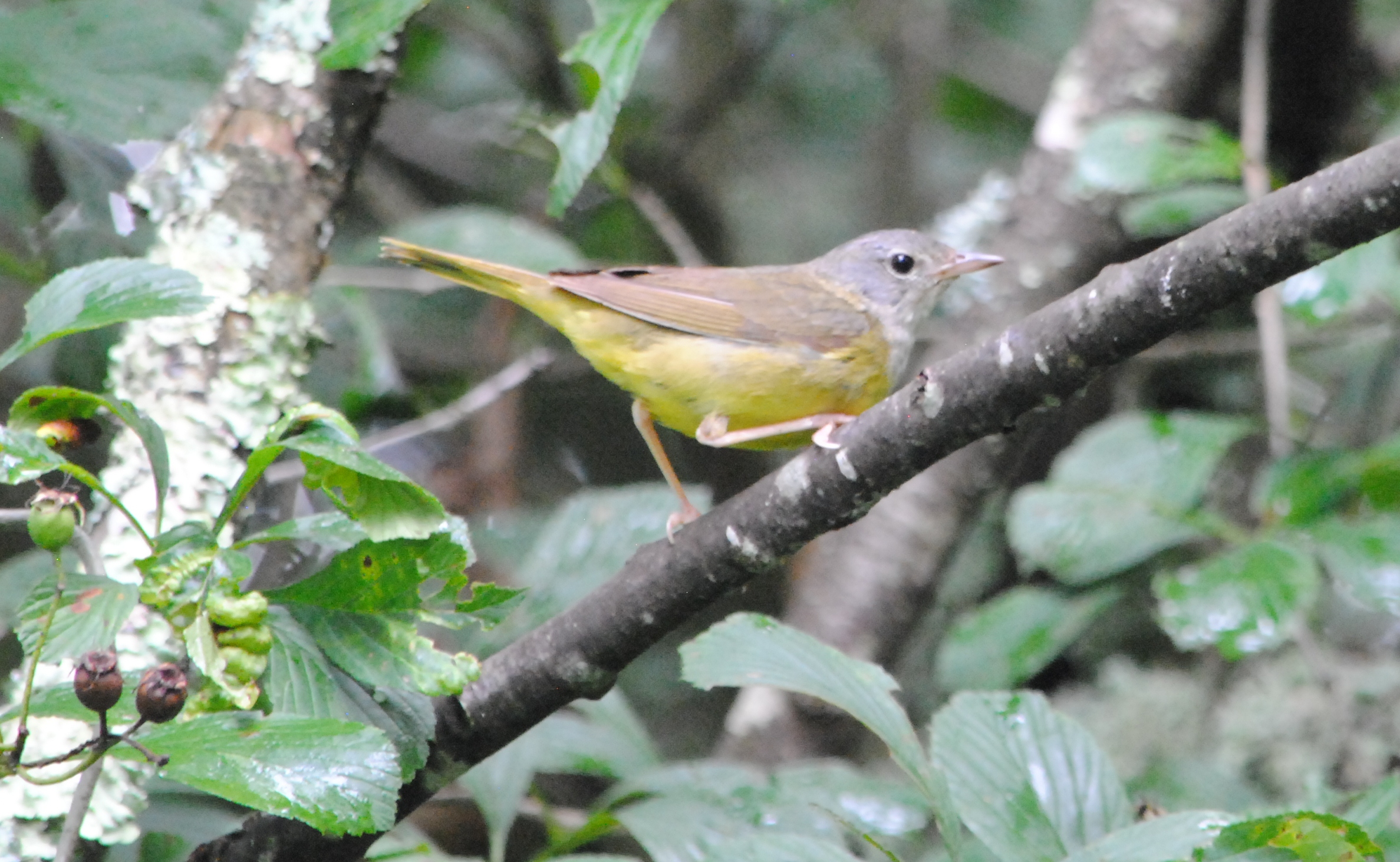| Early Spring Date: | May 6 |
| Late Spring Date: | June 1 |
| Best Dates to See in Spring: | May 20-26 |
Spring: Each spring when the songbird migration is coming to an end, Mourning Warblers sometimes arrive at Monticello Park and give birders a final burst of excitement. They typically pass through the park in late May or early June. Many birders have never seen one, in part because Mourning Warblers are most likely to be present when a lot of birders have already given up on spring migration. They generally nest in Canada and the northern United States, and some have bred in Highland County, Virginia, and Garrett County, Maryland.
Fall: A Mourning Warbler has never been recorded at Monticello during fall migration.
Where to See Them in the Park
Even when they are in the park, Mourning Warblers can be difficult to see, because they often skulk in the underbrush. In past years, some have been seen in the brushy area near the footpath at the top of the park on the knoll side of the stream. Occasionally, they go into the stream to drink and bathe.
Physical Description

The male Mourning Warbler has a gray hood, an olive back, no bold eyering or eye arcs, a pale bill, and a wide black mark on the breast. Different males have varying amounts of black on the breast. The belly and undertail of both the male and female are yellow. This video shows a male bathing.

Mourning Warblers are fairly large, and the short tail gives them a round appearance.


The female is paler than the male and can be difficult to identify. She can be confused with a female Common Yellowthroat and other species. Female Mourning Warblers have a broken white eyering and no black on the breast. Skilled birders have mental templates in their head which they use to identify birds. Most birders who visit Monticello have not seen many female Mourning Warblers, so they do not have a strong mental picture of what they look like. This makes identifying them even more challenging.
Vocalizations
One of the most common songs of the Mourning Warbler sounds like a burry pleased-pleased-pleased-to-meetcha. Focusing on the burriness rather than the phrases the bird is singing is the best way to identify the song.
Hear the vocalizations of the Mourning Warbler.
Notes
The Mourning Dove is named for its mournful cooing. The Mourning Warbler is named because the 19th century ornithologist Alexander Wilson thought the markings on the bird's breast suggested the black clothes people wear when someone dies. Edward Howe Forbush, who wrote about Massachusetts birds during the 1920s, did not like Wilson's name for the warbler, saying, "This crepe-like marking about the breast is the only thing about the bird that would suggest mourning, for it seems as happy and active as most birds, and its song is a paean of joy".
Origin of Names
Common Names: Mourning because the black on the breast reminded Alexander Wilson of mourning attire. The New World Warblers were named for their similar appearance to European warblers, to whom they are not related. Most of the New World warblers do not warble (sing continuously with notes that change frequently).
Genus Name: Geothlypis means a small ground bird.
Species Name: Philadelphia because it is near where Alexander Wilson found the first specimen.
Mourning Warbler video footage
Return to the Index
